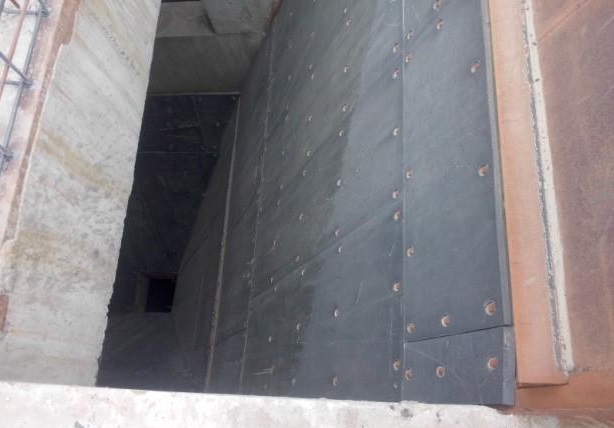E-mail: [email protected]
E-mail: [email protected]
Time:2025-04-11
In modern industrial production, equipment wear and material adhesion are two major problems affecting efficiency and cost. Traditional metal liners are easy to wear, corrosion and easy to stick to materials, resulting in frequent shutdown for cleaning, while the emergence of wear-resistant polymer liners provides a better solution to solve these problems.

Superior wear resistance: The wear-resistant polymer lining is made from ultra-high molecular weight polyethylene, which has a much higher wear resistance than ordinary steel. It performs particularly well in environments with severe wear, such as granular material conveying, mineral processing, and cement production. Its unique molecular structure can effectively absorb impact forces, reducing material loss due to friction and significantly extending the service life of equipment.
Non-stick material surface characteristics: In addition to wear resistance, the low surface energy of wear-resistant polymer liners gives them excellent non-stick properties. Compared with traditional metal liners, wear-resistant polymer liners have a smooth surface with a very low friction coefficient, effectively preventing the adhesion of wet and sticky materials (such as clay, slurries, grains, etc.), reducing material accumulation and clogging.
Lightweight and Corrosion Resistance: The density of wear-resistant polymer liners is only 1/8 that of steel, making them lightweight and easy to install. This can reduce equipment load and lower energy consumption. Additionally, wear-resistant polymer liners are acid and alkali resistant, as well as corrosion-resistant, making them suitable for humid and corrosive environments. This avoids the issues of metal liners rusting and requiring frequent replacement.
Wear-resistant polymer lining, with its advantages of wear resistance, non-sticking material and lightweight, is gradually replacing the traditional metal lining and becoming a new choice in the industrial field. Wear-resistant polymer lining can not only reduce maintenance costs, but also improve production efficiency, providing reliable support for the sustainable development of modern industry.